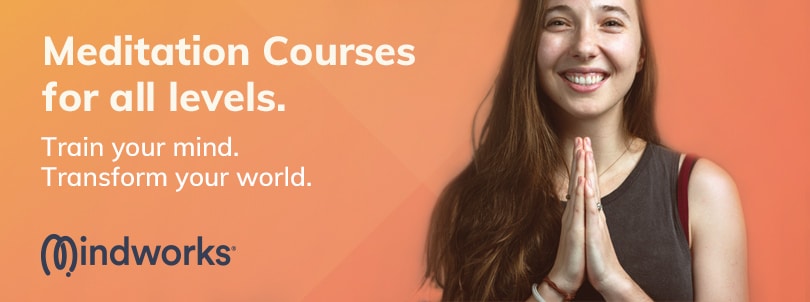Meditation in Motion
Category: Health and Meditation | Mindfulness at Work | Types of Meditation

6 Easy-To-Apply Methods to Practice Mindful Movements Every Day
Even the Buddha, who is usually portrayed meditating in perfect stillness, had to move from time to time. He and his followers walked from town to town and went about their daily business of eating, drinking, washing, and so on. Indeed, in one of his most famous discourses the Buddha states,
“A monk, in going forward and back, applies clear comprehension; in looking straight on and looking away, he applies clear comprehension; in bending and in stretching, he applies clear comprehension; in wearing robes and carrying the bowl, he applies clear comprehension; in eating, drinking, chewing and savoring, he applies clear comprehension; in walking, in standing, in sitting, in falling asleep, in waking, in speaking and in keeping silence, he applies clear comprehension.”
One interpretation of the term “clear comprehension” is that when a mindful movement is involved, each and every one of these activities can be the basis for insight and awareness.
For most of us, the day is filled with countless actions great and small—even checking the phone requires motion! While a majority of our gestures are anything but conscious, it doesn’t have to be that way. One of the many benefits of mindful movement is that it can easily be woven into our regular comings and goings. Walking the dog, cooking, changing a diaper, doing the laundry, making a work call, traveling, everything is fair game. All we need to do is pay attention.
Not all situations lend themselves to deep meditation, but it’s usually possible to maintain some degree of mindfulness—even while checking that phone. For seasoned meditators, mindfulness becomes a habit whose pull is stronger than the yank of distraction. Below you’ll find 6 easy-to-apply methods that will help you make meditation in movement your new habit.
1) Movement during sitting practice
In some traditions, remaining as still as possible while sitting is an essential part of the practice, while in others there’s a bit more flexibility. If your meditation allows for readjusting your posture, having a sip of water, cracking open a window or even taking a bio break, your mind will likely use this as a signal that it is free to do as it pleases, like a frisky puppy released from its crate. This is a prime opportunity to train in remaining present through mindful moving. Pay full attention to whatever you are doing: stretching out your legs, reaching for a glass of water and having a sip, approaching and adjusting the window, and so on. Keep the mind anchored in the present as you maintain awareness of thoughts, movements, and sensations.
2) Walking meditation
This centuries-old practice uses the process of locomotion as the meditation focus—it’s the gold standard of mindful movement meditations. You can choose to maintain awareness of the whole body as it progresses along, or you can focus in on, say, the feet as they lift away from the earth and then touch back down. Some people move slowly and deliberately, while others stride right along. Here’s how to get you started with walking meditation.
3) Exercise
Take off those earbuds and use at least part of your exercise session as a training in mindful movement. As one runner writes, “When I am running I find I focus on my breathing and posture. I embrace the present moment, which is a fundamental principle of meditation.
“As I run I concentrate on controlling my breath, on where my feet are landing and I count my steps. Each time my right foot strikes the footpath or the treadmill I count.”
This steady focus can be applied to most forms of exercise; paying attention to the breath is one way to marry mindfulness and movement in this context.
4) Meditative mind-body practices
Yoga, qigong and tai chi are probably the best-known forms of mindful movement meditation popular in the west. Many sources, such as the Harvard Medical School, tout the myriad advantages of practices such as tai chi, which, they quip, might well be called “medication in motion” given its broad range of benefits for mind and body. These might include improved flexibility, muscle tone, and heart health, as well as a happy, balanced mind.
5) A mindful stretch break at the desk
The Mayo clinic offers some YouTube videos they call Mindful Study Breaks. These only take a few minutes each and are a great way to break up the neck-cramping monotony of desk work while remaining seated. Once you get the hang of them, you can easily make a point of staying focused and present as you stretch and breathe. We particularly liked the shoulders and upper body stretch and the back stretch.
6) Mindful cleaning
Last, but certainly not least, is mindful cleaning. This traditional Zen meditation is practiced both indoors and out. You may have seen images of Japanese monks raking leaves or sweeping the floor with great purpose and focus. As with the other practices mentioned above, mindful cleaning gives you plenty of opportunities to train in presence as you go about your task, and here you get a clean home as a bonus.
The Japanese monk Shoukei Matsumoto wrote a book about the Zen art of cleaning that was a best seller in Japan. In the English translation, A Monk’s Guide to a Clean House and Mind, Matsumoto writes: “It goes without saying that dust will accumulate in a home that is never cleaned. Just as you have finished raking the leaves, more are sure to fall. It is the same with your mind. Right when you think you have cleaned out all the cobwebs, more begin to form. Adherence to the past and misgivings about the future will fill your head, wresting your mind from the present. That is why we monks pour ourselves heart and soul into the polishing of floors. Cleaning is training for staying in the now. Therein lies the reason for being particular about cleanliness.”








